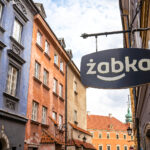In the context of the Ukrainian conflict, the international community is increasingly focused on the complex task of reconstruction. This monumental effort requires a sophisticated and efficient logistics network to transport aid, materials, and in no small part personnel.
Amidst this critical need, Romania has the potential to emerge as a vital logistics hub, playing a crucial role in supporting Ukrainian reconstruction efforts based on its inherent logistical advantages.
As a member of NATO and the European Union, Romania benefits from both organisations’ resources and support structures.
NATO’s collective defence mechanisms and the EU’s economic and humanitarian frameworks provide Romania with enhanced capabilities and access to a broader network of institutional and political logistics. This integration allows Romania to effectively coordinate with allies and EU institutions in the distribution of aid and reconstruction materials.
Furthermore, Romania’s geographic location at the crossroads of Central and Eastern Europe positions it as a strategic logistics hub for Ukrainian reconstruction.
Bordered by Ukraine to the north and Hungary to the west, Romania could serve as a gateway between Western Europe and the safe regions of Ukraine, with its proximity having already made it a transit point for goods and humanitarian aid destined for Ukraine.
The country’s location also provides an essential link between the Black Sea and the rest of Europe. This access is crucial for maritime logistics, with the Port of Constanta on the Black Sea acting as a major entry point for shipments. The port’s capabilities have shown themselves to be able to facilitate the flow of supplies into Ukraine, particularly given the ongoing challenges with Ukrainian ports on the Azov and Black Seas.
Logistical offerings
Romania’s infrastructural offerings focus on railways, the Port of Constanta and general air transport.
First, Romania has a comprehensive railway system that connects its major cities and ports, with companies such as Grampet already leaders in industrial transport across Southeast Europe.
The railways are integral for moving large quantities of goods overland, complementing the maritime and road transport systems. The road network, including key highways such as the A2 motorway, facilitates efficient land transport, linking Constanta with major Ukrainian entry points and Western European destinations.
Secondly, the Port of Constanta is one of the largest and most modern ports in the Black Sea region, acting as a critical node in the logistics chains of Romania, Southeastern Europe and, potentially, Ukrainian reconstruction.
Its facilities support large cargo volumes and provide essential services such as customs processing and warehousing. The port’s strategic importance is further enhanced by ongoing investments, partially with European Union assistance, aimed at expanding its capacity and improving its connectivity with European transport networks.
Thirdly, Romania’s international airports, including Henri Coanda International Airport in Bucharest, play a significant role in the logistics framework that could power Ukrainian reconstruction.
They are—and could be—used for transporting high-priority and time-sensitive materials, including medical supplies and humanitarian aid.
All of these make Romania a near ideal hub for the institutional and transportation logistics that Ukraine’s reconstruction necessitates.
It is very much hoped that business and political leaders will see it that way as Ukraine embarks on the challenging path of reconstruction.







